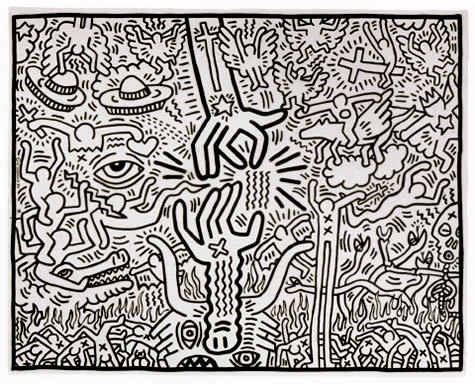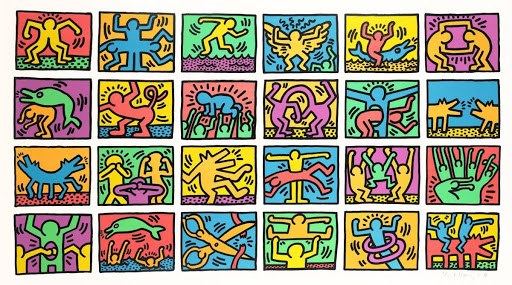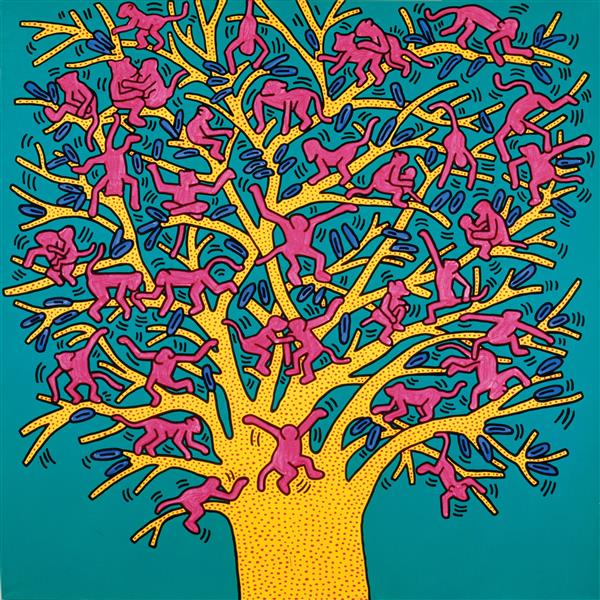Abhishek Kumar
February 16, ON THIS DAY
I don’t think art is propaganda; it should be something that liberates the soul, provokes the imagination and encourages people to go further. It celebrates humanity instead of manipulating it.
Keith Haring
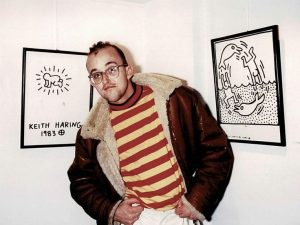
Keith Haring was a well-known American artist and political activist who rose to prominence in the 1980s. His artwork often featured simple, bold lines and symbols, as well as characters and messages that focused on universal themes of acceptance, love, and peace. Many of his works featured recognizable symbols such as the crawling baby, barking dog, and radiant heart. His work was heavily influenced by his experiences living in New York City and his activism around social issues like AIDS awareness, gay rights, and the fight against apartheid in South Africa.
Keith Haring was a social activist whose work is often credited with helping to bring street art into the mainstream. Born in Pennsylvania in 1958, Haring began his artistic career in the early 1980s in New York City. He quickly established himself as one of the leading artists of the time, and his iconic artworks have since become symbols of urban culture and art. Haring’s art was inspired by the graffiti movement of the 1970s, but he was able to make it his own with its simplistic designs and bright colours. His art often incorporated the use of symbols and images, such as his famous “radiant baby” and barking dog, as well as political messages. These themes and messages often reflected his views on politics, race, class, and sexuality.
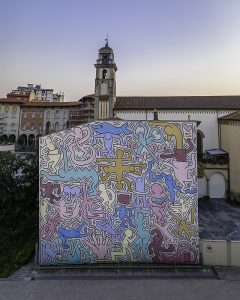
Haring’s artwork often featured stylized figures, such as dancing figures and crawling babies became recurring motifs in his art. These figures were intended to convey a sense of movement, energy, and playfulness, and often conveyed themes of love, unity, and togetherness. One of Haring’s most famous works is the “Radiant Baby,” a simple drawing of a baby with outstretched arms and a glowing aura. This image is often interpreted as a symbol of hope and optimism, and is seen as a representation of the artist’s own childlike enthusiasm and love of life.
The crawling baby is a symbol of innocence and hope, and is often seen in many of Haring’s works. It represents the potential for growth and the possibility of a better future. The barking dog is a symbol of the protective nature of the human spirit. It is meant to express the idea that we should all look out for one another and protect each other. The radiant heart is a symbol of love and acceptance. It is meant to represent the idea that everyone, regardless of race, gender, or sexual orientation, should be accepted and embraced.

Haring’s art was also heavily influenced by street art and graffiti culture, and he often used public spaces like subways and billboards as a canvas for his work. He believed that art should be accessible to everyone, and sought to make his work widely available and easily understood. Despite his untimely death in 1990 at the age of 31, Haring’s artwork continues to inspire people around the world. His artworks can be found in galleries, museums, and public spaces, and his influence on the art world is still felt today. The life and art of Keith Haring will always be remembered as a bright light in the art world.
Haring’s artwork is meant to inspire and encourage people to think about the world in a different way. He wanted to promote peace, love, and acceptance, and to bring attention to important social issues. Haring’s work can be seen in many public places, from subway stations to museums. He also had several solo exhibitions throughout his career, including at the Whitney Museum of American Art in New York. In addition to his artwork, Haring was also involved in various social and charitable causes, including AIDS awareness and education. His iconic artwork serves as a reminder of his message of unity and inclusion.
